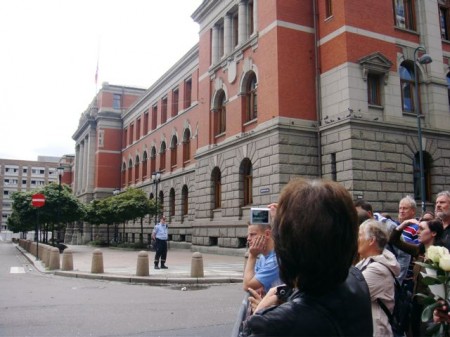Around 2,000 government employees in Norway are beginning to work out of hastily arranged new quarters, after their offices were destroyed in Friday’s bombing attack in the capital. The sheer logistics of setting up shop for the country’s top ministries are daunting, and the search is on for new permanent office space.

A government crisis team started scrambling over the weekend to find new temporary workspace for all the ministries that no longer can work out of the buildings where many had been housed since the late 1950s.
By Tuesday, the Office of the Prime Minister had been moved, for example, to the government’s official guest house at Parkveien 45. It’s located just behind the Royal Palace and conveniently next door to the new official residence of the prime minister, meaning that Jens Stoltenberg won’t have a very long commute.

The prime minister’s office has for years been perched atop the lone high-rise in the government complex, which was completed in 1958 and also housed the Justice Ministry. It has been moved to temporary quarters inside the state police academy just north of the Majorstuen district at Slemdalsveien 5.
Norway’s important Oil & Energy Ministry won’t be far away, and has moved in to the NVE (water and energy directorate) building adjacent to the northeast side of the Frogner Park at Middelthunsgate 29. Both it and the ministry for business and trade were in one of the newer buildings hardest hit, just across the street from the high-rise. The latter, led by Trade Minister Trond Giske, has moved down the street to share space in the office of Innovation Norway, along with the Fisheries Ministry.

The Finance Ministry, meanwhile, was forced to move across town to offices within the tax directorate at Økern and the Labour Ministry is operating from the social service agency NAV on Sannergata in the Grünerløkka district. The Ministry of Agriculture has moved to the Food Safety Directorate’s building in Adamstuen, north of downtown and the Transport Ministry is moving into the offices of the state railroad Jernbaneverket not far away from its current offices. The hard-hit Health Ministry is moving several blocks uptown to the offices of the state health directorate.
The Foreign Ministry is one of the few that escaped any bomb damage because it’s located outside the complex (called Regjeringskvartalen) on the northwestern fringe of downtown.
The forced moves are causing unexpected turbulence, fortunately during what’s still a relatively quiet time of the year because of summer holidays. But it’s traumatic for all involved and officials still say they ultimately want to keep the ministries close together in a downtown location.
The so-called R5 building that has housed the ministries of culture, transport, agriculture, municipal governments, administration and family and equality matters may be ready for occupancy by the end of the week, according to Statsbygg, in charge of state-owned real estate. Other buildings including the high-rise may be damaged beyond repair and may need to be torn down. Building a new government complex, on the site or elsewhere, will take years.
Real estate agents and developers have been quick to offer space available for lease. Paul Lødøen of Oslo S Utvikling, for example, which is behind the high-rise waterfront redevelopment at Bjørvika, told newspaper Dagens Næringsliv (DN) that they have 15,000 square meters of space available. Several other large buildings also have some available space, but not in large-enough chunks to consolidate ministries.
Views and News from Norway/Nina Berglund
Join our Readers’ Forum or comment below.
To support our news service, please click the “Donate” button now.

